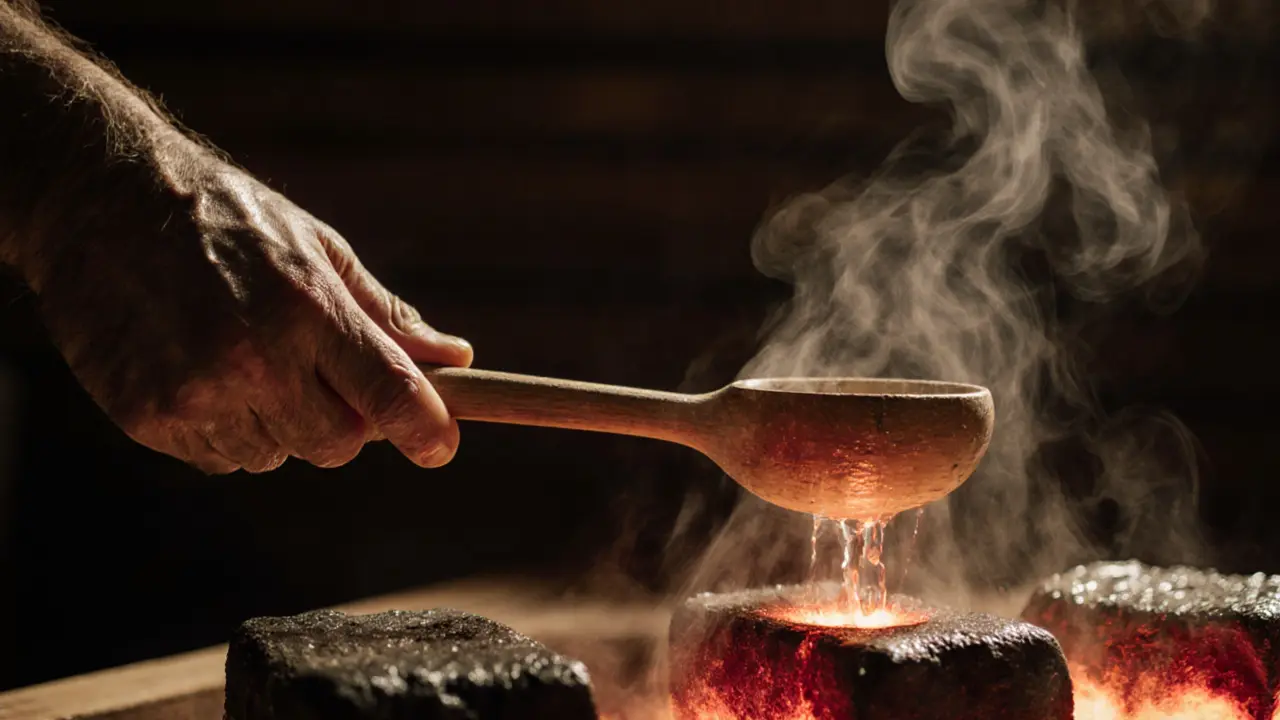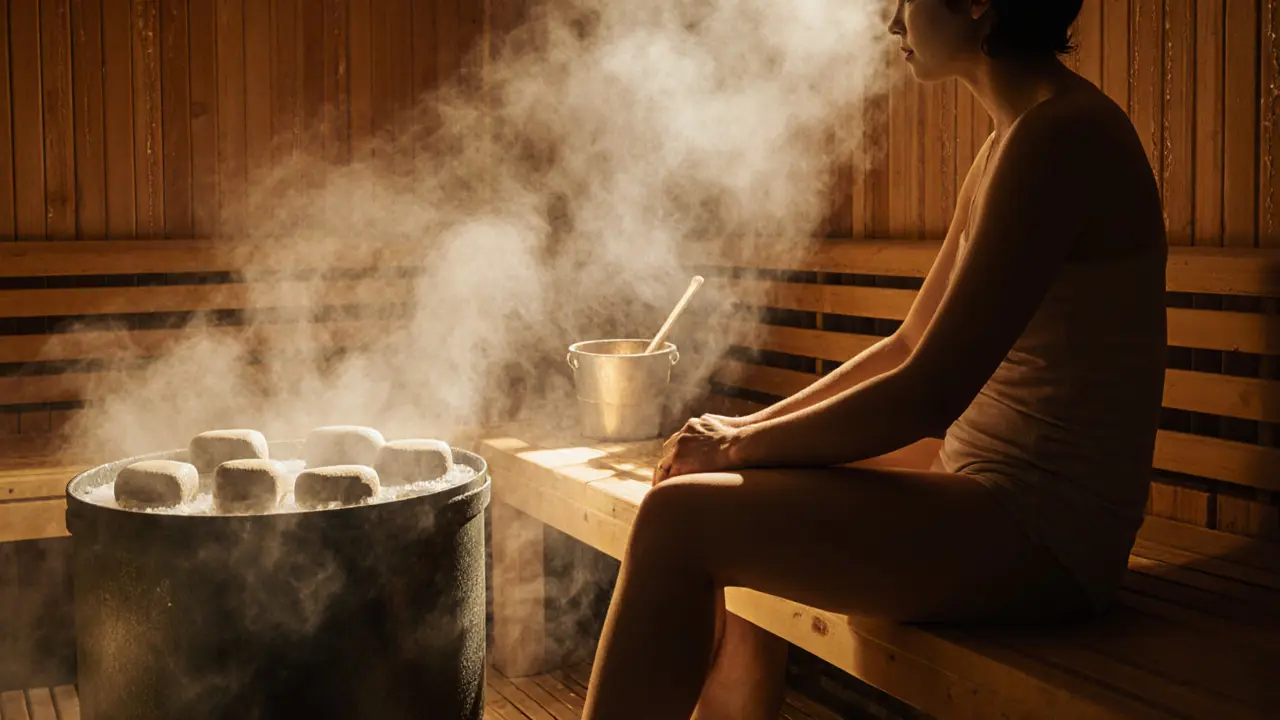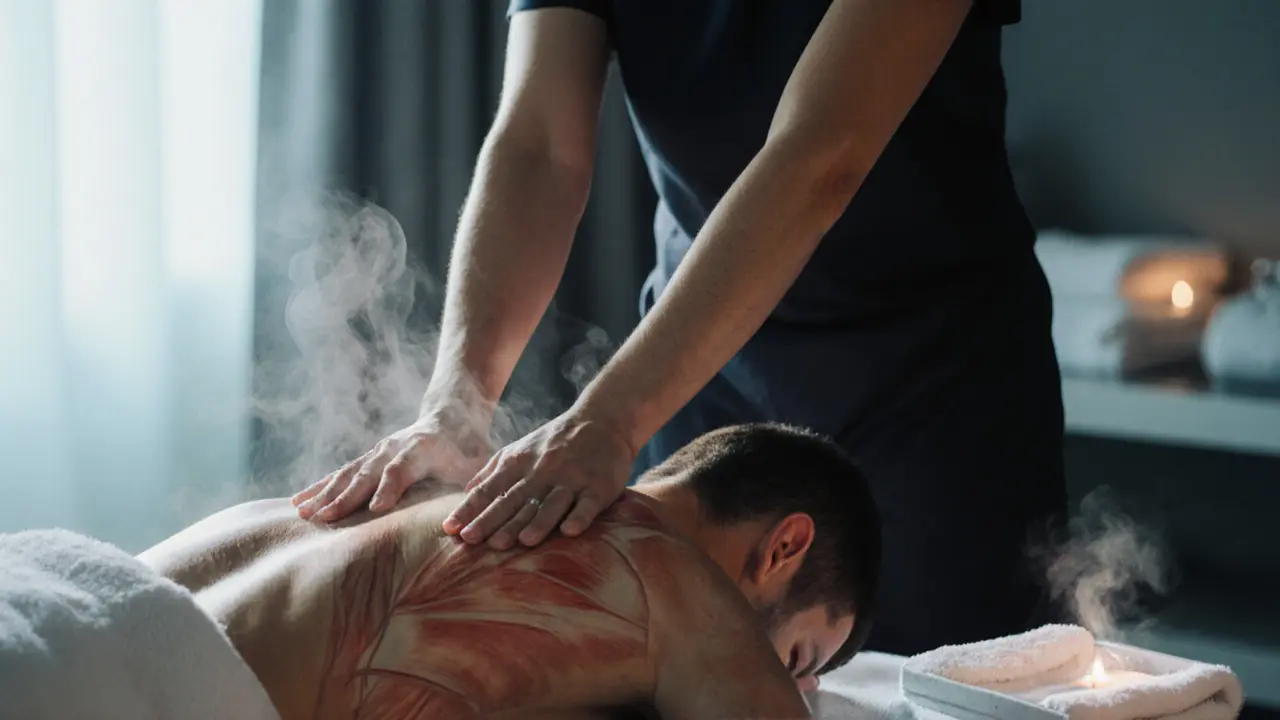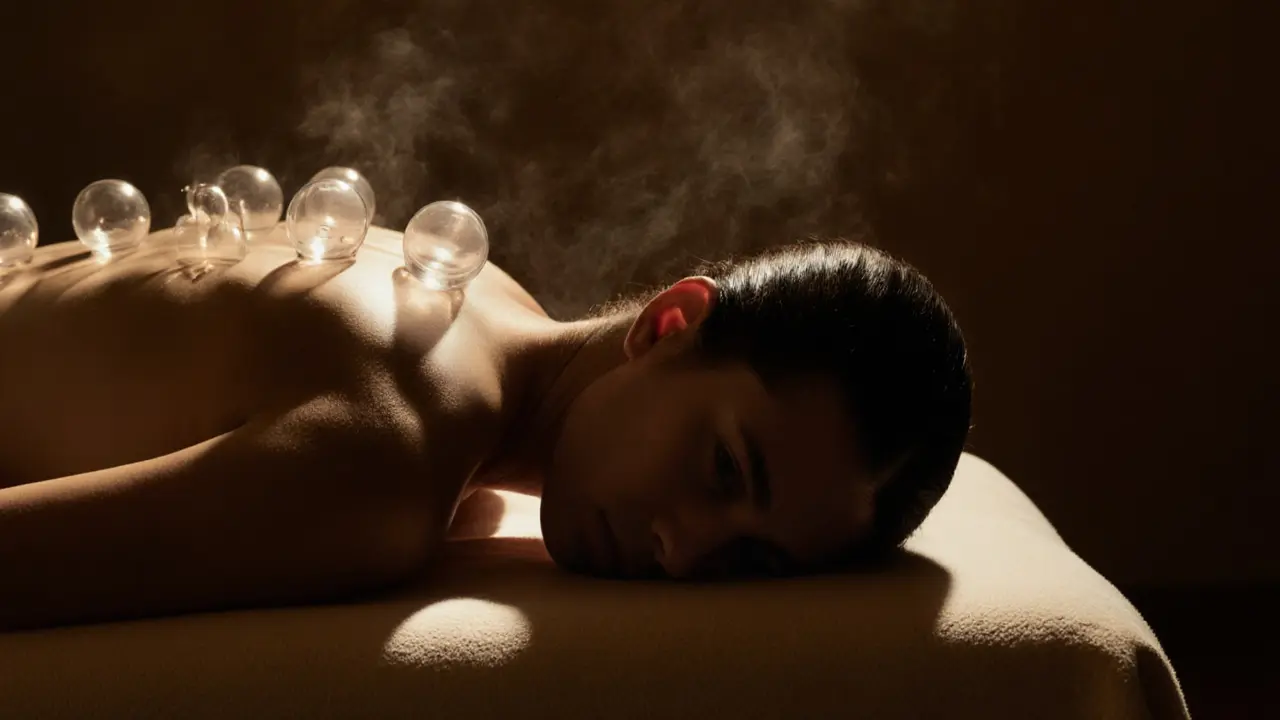How Long Should I Sit in a Sauna? Your Comprehensive Guide
When you step into a sauna in Dubai, the heat hits you like a warm, dry hug. It’s not just about sweating-it’s about resetting your body, calming your mind, and escaping the city’s constant buzz. But here’s the real question: how long should I sit in a sauna? Too short, and you barely feel the shift. Too long, and you risk dizziness, dehydration, or worse. The answer isn’t one-size-fits-all. It depends on your body, your goals, and the type of sauna you’re in. In Dubai’s dry heat, where temperatures can hit 90°C (194°F) in traditional Finnish saunas, timing matters more than ever.
Understanding the Basics of Sauna Use
Origins and History
Saunas trace back over 2,000 years to Finland, where they were more than just hot rooms-they were sacred spaces for cleansing, healing, and even childbirth. The word "sauna" itself comes from the Finnish language. In traditional Finnish culture, people would heat stones with fire, pour water over them to create steam, and sit quietly, letting the heat work its magic. Today, Dubai’s luxury spas have modernized this ritual with infrared panels and electric heaters, but the core idea remains: heat as therapy. The practice spread globally because it works-not because it’s trendy, but because it’s biologically effective.
Core Principles or Components
There are two main types of saunas you’ll find in Dubai: traditional Finnish saunas and infrared saunas. Finnish saunas heat the air around you-usually between 70°C and 100°C (158°F-212°F)-and rely on dry heat with occasional steam from water poured on hot stones. Infrared saunas use light waves to heat your body directly, not the air. They run cooler, around 45°C to 60°C (113°F-140°F), but still make you sweat deeply. Both types trigger the same physiological response: your core temperature rises, your heart rate increases slightly, and your body activates its natural cooling system-sweating. This process helps flush out toxins, relaxes muscles, and signals your nervous system to shift from "fight or flight" to "rest and digest."
How It Differs from Related Practices
Many people confuse saunas with steam rooms or hot yoga. Here’s how they stack up:
| Practice | Key Feature | Primary Benefit |
|---|---|---|
| Traditional Sauna | Hot, dry air (70-100°C) | Deep muscle relaxation, improved circulation |
| Steam Room | Hot, moist air (40-50°C) | Respiratory relief, skin hydration |
| Hot Yoga | Warm room (30-40°C) with physical movement | Flexibility, mental focus |
Unlike steam rooms, saunas don’t hydrate your airways-they dry them out. That’s why you need to drink water before and after. Unlike hot yoga, saunas require zero movement. You just sit. And that stillness is part of the power.
Who Can Benefit from Sauna Use?
Almost anyone can benefit-especially in Dubai’s climate. Athletes use it to recover faster. Office workers use it to melt away stress from long screens and meetings. People with chronic muscle pain, arthritis, or even mild anxiety find relief. Even healthy individuals report better sleep and clearer skin after regular use. But if you’re pregnant, have heart conditions, or take medications that affect your temperature regulation, you should talk to your doctor first. Saunas aren’t dangerous-but they’re not for everyone.
Benefits of Sauna Use for Body and Mind
Stress Reduction
When you sit in a sauna, your body releases endorphins-the same chemicals that make you feel good after a workout. Your heart rate increases gently, mimicking light cardio, while your mind quiets down. The heat tells your nervous system: "There’s no threat here." In Dubai, where life moves fast and the sun never stops shining, this pause is priceless. People often say they feel "reset" after a 15-minute session. It’s not magic-it’s biology.
Enhanced Recovery and Muscle Relief
After a long run in the desert heat or a tough gym session, your muscles are tight and sore. Heat increases blood flow, bringing oxygen and nutrients to tired tissues while flushing out lactic acid. Many Dubai-based athletes and fitness trainers swear by post-workout sauna sessions. It’s not a replacement for stretching or foam rolling, but it’s a powerful addition. Studies show sauna use can reduce muscle soreness by up to 50% within 24 hours.
Emotional Well-Being
Saunas aren’t just physical-they’re emotional. In cultures where silence is respected, the sauna is a place to be alone without feeling lonely. In Dubai, where social obligations can feel constant, this quiet time becomes a form of self-care. Many users report feeling calmer, more centered, and even more creative after regular sessions. It’s not a cure for depression, but it’s a proven tool for managing daily stress.
Practical Applications
Think of sauna use as your daily reset button. Here’s how it fits into real life:
| Benefit | Description | Impact |
|---|---|---|
| Skin Clarity | Opens pores and flushes impurities | Reduces breakouts, improves texture |
| Sleep Quality | Triggers drop in core temperature post-sauna | Faster sleep onset, deeper rest |
| Immune Support | Raises body temperature slightly, mimicking fever response | May reduce frequency of colds |
| Heart Health | Improves circulation and lowers blood pressure over time | Associated with lower cardiovascular risk |
What to Expect When Engaging with a Sauna
Setting or Context
In Dubai, saunas are often part of luxury spa complexes, hotel wellness centers, or high-end home installations. You’ll usually find them in a quiet, dimly lit room with wooden benches, a stone heater, and a bucket of water for steam. Some places offer towel service, aromatherapy oils, or chilled herbal teas afterward. The atmosphere is calm-no music, no phones, no talking. It’s intentional. You’re not here to socialize. You’re here to breathe.
Key Processes or Steps
Here’s what happens in a typical session:
- Shower before entering to remove lotions, sweat, or makeup.
- Wear a towel or light swimwear (no synthetic fabrics-they trap heat).
- Start with 10-15 minutes in the sauna.
- Step out, cool down for 5 minutes (cold shower or rest in a cooler room).
- Repeat 1-2 more times if comfortable.
- Hydrate well afterward.
Customization Options
Not everyone wants the same heat. Some prefer the intense dryness of a Finnish sauna. Others like the gentler, deeper heat of infrared. You can control the temperature in many modern saunas, and some even let you choose between light therapy or chromotherapy (color therapy) options. If you’re new, start with infrared. It’s easier on the body.
Communication and Preparation
Always tell the spa staff if you’re new, pregnant, or have any health concerns. Most Dubai spas will ask you to sign a waiver-but don’t just sign it. Ask questions. What’s the max temperature? How long do people usually stay? Are there staff on-site? Good spas encourage this dialogue. Your safety matters more than their schedule.

How to Practice or Apply Sauna Use
Setting Up for Success
If you’re using a home sauna or visiting one for the first time, prepare like this:
- Drink 500ml of water 30 minutes before entering.
- Avoid alcohol or heavy meals for at least 2 hours before.
- Bring a towel, a water bottle, and a change of clothes.
- Set a timer-don’t rely on feeling "ready." Heat distorts time perception.
Choosing the Right Sauna
For beginners in Dubai, infrared saunas are the gentlest entry point. They’re common in wellness centers like Spa Al Maha or The Ritz-Carlton Spa. If you’re experienced and want the traditional experience, try The Dubai Mall’s Spa or Jumeirah Al Naseem. Look for places that offer temperature control and clean, well-maintained facilities.
Step-by-Step Guide for Beginners
First session? Here’s your simple plan:
- Arrive 15 minutes early to relax and hydrate.
- Shower, wrap yourself in a towel, sit on the lower bench (it’s cooler).
- Stay for 10 minutes. If you feel dizzy, lightheaded, or nauseous-leave immediately.
- Step out. Cool down with a lukewarm shower or just sit quietly.
- Drink 250ml of water.
- Wait 20 minutes before doing anything else.
Tips for Beginners or Couples
Going with a partner? Don’t talk. Just sit. The silence is part of the experience. If you’re new, don’t push for longer sessions. Ten minutes is enough to feel the difference. And never use a sauna alone if you’re not used to it-especially in Dubai’s heat. Always have someone nearby.
Safety and Ethical Considerations
Choosing Qualified Practitioners or Resources
Not all spas are created equal. Look for places with certified wellness staff, clean facilities, and clear safety protocols. Ask: "Do you have staff trained in heat-related emergencies?" If they hesitate, walk away. In Dubai, reputable spas follow international standards like those from the International Spa Association.
Safety Practices
Here’s what to always do:
| Practice | Purpose | Example |
|---|---|---|
| Hydrate before and after | Prevent dehydration | Drink 500ml-1L of water |
| Don’t stay longer than 20 minutes | Avoid overheating | Set a timer |
| Cool down between sessions | Let body regulate temperature | Take a cool shower or rest |
Setting Boundaries
Your comfort is non-negotiable. If the heat feels too intense, stand up. If you feel dizzy, leave. No one should pressure you to "push through." A good spa will never shame you for leaving early.
Contraindications or Risks
Don’t use a sauna if you:
- Are pregnant
- Have uncontrolled high blood pressure or heart disease
- Take medications that affect heat tolerance (like diuretics or beta-blockers)
- Are under the influence of alcohol or drugs
- Have open wounds or recent surgery
If you’re unsure, talk to your doctor. Saunas are safe for most-but not all.
Enhancing Your Experience with Sauna Use
Adding Complementary Practices
Pair your sauna with deep breathing or light stretching afterward. Some people enjoy a cold plunge or even a short meditation session. In Dubai, many spas offer post-sauna aromatherapy with eucalyptus or lavender-these help extend the calming effect.
Collaborative or Solo Engagement
Saunas are great alone. But if you’re with a partner or friend, use the quiet time to just be present. No phones. No talking. Just shared stillness. It’s rare, and it’s powerful.
Using Tools or Props
Bring a wooden bench pad if you’re sensitive to heat. A small towel for your head helps. Some people like to sip herbal tea after-peppermint or chamomile work well. Avoid caffeine for at least an hour after.
Regular Engagement for Benefits
One session won’t change your life. But three times a week? That’s when you start to notice. Better sleep. Less tension. More calm. Aim for 10-20 minutes, 2-3 times a week. Consistency beats intensity.

Finding Resources or Experts for Sauna Use
Researching Qualified Practitioners or Resources
Check reviews on Google or Tripadvisor for spas in Dubai. Look for mentions of cleanliness, staff knowledge, and safety. Avoid places with no clear temperature controls or staff who don’t answer questions.
Online Guides and Communities
Follow wellness blogs like Wellness in Dubai or join Facebook groups like "Dubai Sauna Enthusiasts." These are great for tips, new spa openings, and shared experiences.
Legal or Cultural Considerations
In Dubai, modesty matters. Most spas require towels or swimwear. Public nudity is not allowed. Respect local norms-even in private spas. Also, avoid using saunas during Ramadan if you’re fasting. The heat can be dangerous without fluids.
Resources for Continued Learning
Read "The Finnish Way" by Katja Pantzar for cultural insight. Watch videos from the Mayo Clinic on sauna health benefits. Both are reliable, non-commercial sources.
FAQ: Common Questions About Sauna Use
How long should I sit in a sauna?
For beginners, start with 10-15 minutes. Experienced users can go up to 20 minutes, but never more than that in one session. In Dubai’s dry heat, even 15 minutes is enough to trigger the benefits. Always listen to your body-if you feel dizzy, nauseous, or overly hot, get out immediately. It’s not a competition. The goal is relaxation, not endurance.
What happens during a sauna session?
Your body temperature rises slightly, your heart pumps a bit faster, and you begin to sweat. This triggers your body’s natural detox and recovery systems. Blood flow increases to your skin and muscles, helping reduce inflammation and tension. Mentally, the quiet, warm environment signals your brain to relax. Many people describe it as a "mental reset." You don’t do anything-just breathe and let the heat work.
Is a sauna better than a steam room?
It depends on what you want. Saunas use dry heat and are better for deep muscle relaxation and circulation. Steam rooms use moist heat and are gentler on the respiratory system-great if you have congestion. In Dubai, where the air is already dry, many prefer saunas because they feel more effective. But if your skin feels tight or your nose is stuffy, try a steam room instead. You can even alternate between them.
Can I use a sauna every day?
Yes, if you’re healthy and hydrated. Many regular users in Dubai enjoy daily 10-15 minute sessions. But if you’re new, start with 2-3 times a week. Daily use isn’t necessary for benefits. Overdoing it can lead to dehydration or fatigue. Listen to your body. If you feel drained after a session, take a day off.
Are infrared saunas safer than traditional ones?
Infrared saunas are generally easier for beginners because they operate at lower temperatures (45-60°C) while still making you sweat deeply. They’re also better for people with joint pain or sensitivity to high heat. Traditional saunas reach much higher temperatures and can be overwhelming if you’re not used to them. Neither is "safer"-just different. Choose based on your comfort level and goals.
Conclusion: Why Sauna Use is Worth Exploring
A Path to Calm in a Busy City
In Dubai, where life moves at lightning speed, the sauna offers something rare: stillness. It’s not a luxury-it’s a necessity for anyone who wants to reset their nervous system, release tension, and sleep better. You don’t need to spend hours. You don’t need expensive gear. Just 15 minutes, a towel, and the courage to sit quietly.
Try It Mindfully
Start small. Listen to your body. Hydrate. Don’t rush. If you feel good after one session, you’ll want to come back. If you don’t, that’s okay too. Not every practice works for everyone. But if you give it a fair shot, you might just find your new favorite way to unwind.
Share Your Journey
Tried a sauna in Dubai? Share your experience in the comments-how long did you stay? What did you feel? Follow this blog for more wellness tips tailored to life in the UAE.
Some links may be affiliate links, but all recommendations are based on research and quality.
Word count: 1,687
Suggested Images
- A person sitting quietly in a wooden sauna with steam rising from hot stones
- Close-up of hands holding a wooden bucket and ladle used to pour water over sauna stones
- Someone stepping out of a sauna into a cool, tiled room with a towel wrapped around them
- Two people sitting side by side in an infrared sauna, eyes closed, relaxed
- A wellness center in Dubai with a sign reading "Sauna & Recovery Room"
Suggested Tables
- Comparison of Sauna, Steam Room, and Hot Yoga
- Key Benefits of Regular Sauna Use
- Sauna Safety Tips







